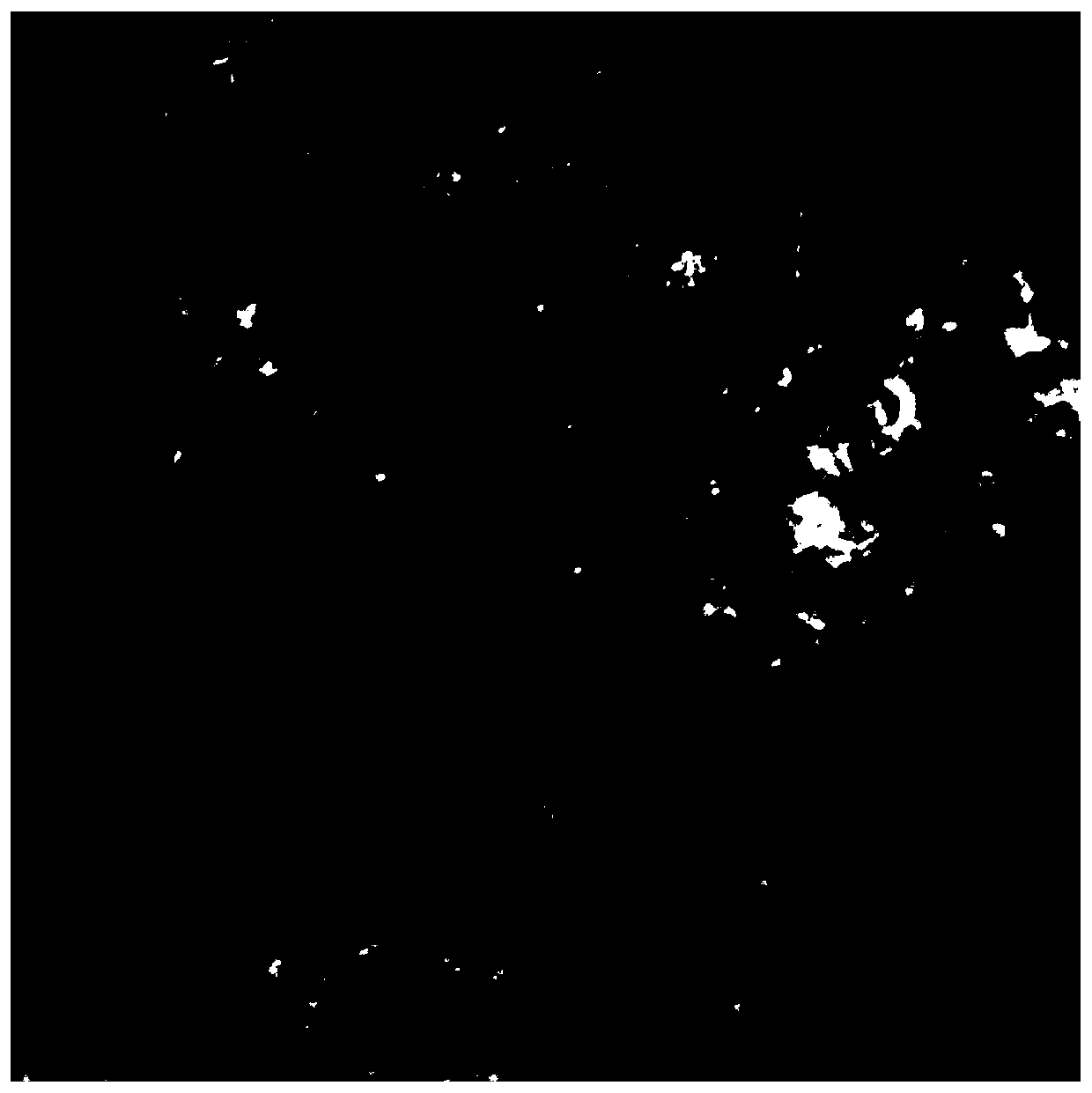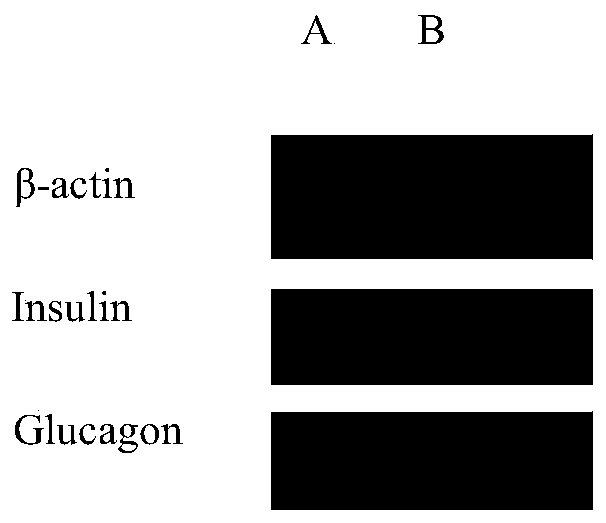A method for inducing mesenchymal stem cells to differentiate into islet-like cells
A technique for islet-like cells and stromal cells, which is used to induce stem cells to differentiate into islet-like cells in vitro. The application of islet-like cells can solve the problem of inability to maintain stable glucose levels, high cost of pancreas/islet separation, and the need for inflammatory responses. Multiple transplantations and other problems to achieve the effect of improving the efficiency of induction and differentiation, reducing the risk of clinical use, and improving the ability of insulin secretion
- Summary
- Abstract
- Description
- Claims
- Application Information
AI Technical Summary
Problems solved by technology
Method used
Image
Examples
specific Embodiment approach 1
[0021] Specific embodiment one: A method of inducing mesenchymal stem cells to differentiate into islet-like cells according to this embodiment, it is carried out according to the following steps:
[0022] 1. Isolate and obtain mesenchymal stem cells from umbilical cord, placenta or adipose tissue, and subculture;
[0023] 2. Preparation of Differentiation Medium
[0024] The differentiation medium is a brain tissue conditioned medium, a cell differentiation induction medium and a stem cell conditioned medium;
[0025] The preparation process of the brain tissue conditioned medium is as follows: under sterile conditions, take out the brain of a 6-7 day old rat, wash it with PBS or saline, centrifuge at 1000rpm for 6min, discard the supernatant, and use 10% FBS in DMEM Resuspend the pellet in the high-glucose medium, mash the brain tissue into single cells, collect the brain tissue cells and culture them with 10% FBS DMEM high-glucose for 1 day, add cytarabine at a concentrati...
specific Embodiment approach 2
[0029] Embodiment 2: This embodiment is different from Embodiment 1 in that: the specific process of differentiating the umbilical cord, placenta or adipose tissue mesenchymal stem cells into islet-like cells after subculture in Step 1 is as follows:
[0030] The mesenchymal stem cells of the umbilical cord, placenta or adipose tissue subcultured in step 1 to the P3 generation were mixed with 4×10 4 Inoculum / mL inoculum was inoculated in a 6-well plate, and cultured in DMEM / F12 medium containing 10% FBS. After 24 hours of culture, BTCM was replaced for 7 days, and BTCM was replaced every 2 days. After 7 days of culture, cells were used The differentiation induction medium was cultured for 7 days, the induction medium was changed every 2 days, and then the cell differentiation induction medium and SCM were co-cultured at a volume ratio of 1:1 for 14 days to obtain mature islet-like cells. Others are the same as in the first embodiment.
specific Embodiment approach 3
[0031] Specific embodiment three: the difference between this embodiment and specific embodiment one is: the described umbilical cord mesenchymal stem cell isolation and subculture process are as follows:
[0032] Take 15-20cm umbilical cords of full-term fetuses, wash them with normal saline and 75% alcohol by volume, cut them into lengths of 2-3cm, separate the arteries and veins, and separate the Wharton’s jelly in the middle. Cut into 0.5~2mm under sterile conditions 3 The tissue block was inoculated according to 1g / T75 bottle, cultured with 10% FBS medium, and the medium was changed after 5 days. After the cell fusion degree reached more than 80%, it was digested by trypsin with a concentration of 0.125% by volume, and obtained Single cell, according to 8×10 5 Cells / T75 bottle inoculated, cultured with 10% FBS medium, placed in a carbon dioxide incubator, and passaged after the cell fusion degree reached more than 90%, at the same time, the immunolabeling of umbilical co...
PUM
 Login to View More
Login to View More Abstract
Description
Claims
Application Information
 Login to View More
Login to View More - R&D
- Intellectual Property
- Life Sciences
- Materials
- Tech Scout
- Unparalleled Data Quality
- Higher Quality Content
- 60% Fewer Hallucinations
Browse by: Latest US Patents, China's latest patents, Technical Efficacy Thesaurus, Application Domain, Technology Topic, Popular Technical Reports.
© 2025 PatSnap. All rights reserved.Legal|Privacy policy|Modern Slavery Act Transparency Statement|Sitemap|About US| Contact US: help@patsnap.com



